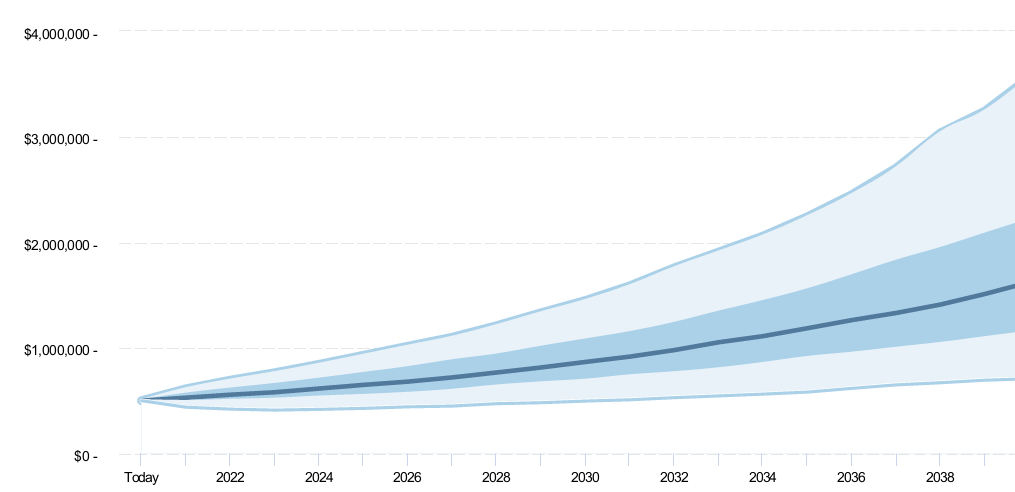Proposals as fact-finding missives
Maybe you don’t have a goals-based tracking and reporting system, but you want to have illustrations to show whether a client is on track (or not) to meet their goals. At the upcoming annual review meeting with your client, consider using an asset allocation proposal tool with Monte Carlo simulations to show whether they’re still on track. Focusing on progress toward goals has the additional benefit of taking the conversation away from a benchmark-relative performance conversation.
Asset allocation shouldn’t be a set-it-and-forget-it exercise. You can use that same asset allocation decision-making framework in your ongoing annual review meetings: discuss goals, determine target asset allocation, run Monte Carlo wealth simulations, discuss range of long-term wealth possibilities, repeat as necessary.
Monte-Carlo based simulation reports help an investor visualize how a particular asset allocation might be expected to perform over thousands of economic and market scenarios in the coming years. All the better if you’re using forward-looking capital market forecasts, rather than historical indexes. With Monte Carlo simulations, you can show how the portfolio might grow in value—from worst-case scenario to best-case scenario—and gauge the comfort level of your client on those worst case scenarios.
Consider the following: you met with your client last year, and it’s now time for their annual review meeting. Since you last met with them, markets have gone up and down, economic forces have been at play and future market expectations may have shifted. Additionally, perhaps the client’s goals have changed—maybe there’s been a new job or retirement, births or deaths, or reprioritizing of goals.
Spend some time and review the proposal from last year. Review those goals that went into determining the asset allocation and make any adjustments to the goals which might lead to a different target wealth, or target asset allocation. Re-run the proposal with the (new) asset allocation and current market expectations. Notice if there’s been a significant shift in wealth expectations. Confirm the client’s target wealth is still within the expected ending wealth from the Monte Carlo simulations. If not, that can lead to a fruitful discussion on goals and expectations.
The results of Monte Carlo simulations are often illustrated as in the hypothetical example below, showing the wealth projections of a $500,000 portfolio at the 5th and 95th percentile (bottom and top lines, respectively), 25th and 75th percentiles (the outlines of the dark blue band) and median value (dark blue line). Perhaps the client is worried about too many possibilities of the ending portfolio value being less than $1 million. Now would be the time to discuss steps to take. Perhaps an asset allocation change is recommended, or perhaps it’s a watchpoint that you’ll review again next year.
Projected growth of portfolio (hypothetical example)
Click image to enlarge

Note:The projection shown here is hypothetical in nature, does not reflect actual investment results and is not a guarantee of future results.
You can also use this opportunity to review assets not under your purview. If they were included in the original asset allocation proposal, now would be an appropriate time to request updated account values, in order to complete a full representation of the client’s assets. Those account values can also give you insight into how those outside accounts performed.
The bottom line
Proposals can be a useful tool, even after they’ve helped the client commit to an asset allocation. Use proposals, especially those incorporating Monte Carlo simulations and forward-looking capital market forecasts, to continue those conversations in ongoing annual review meetings.